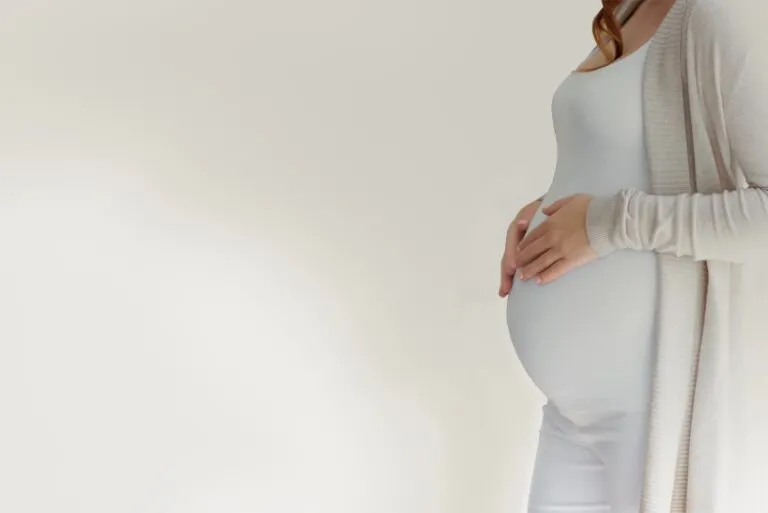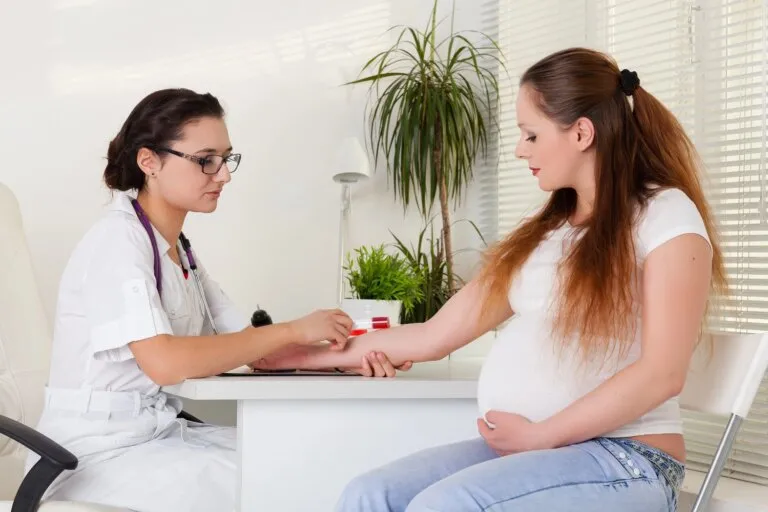In the eleventh week of pregnancy, it is advisable to have a first ultrasound scan to check whether the baby is developing properly and whether the expectant mother is well. Many pregnancy complaints occur during this time, but it is still advisable to start training the pelvic floor muscles.
In the 11th week of pregnancy, the belly may already be rounded, especially in the lower area. This often leads to flatulence and constipation and increases the body weight. However, this is a sign of the proper growth process of the little one, where a functioning heart or the first movements of the limbs can be observed.
11th week of pregnancy – abdominal girth and other changes in mothers
The end of the first trimester is the right time for prenatal tests. The eleventh week is not infrequently one of the most important phases of pregnancy for the parents, as the information gathered can be used to determine the regularity and degree of development of the baby. An ultrasound examination in the 11th week of pregnancy makes it possible to confirm or exclude certain genetic defects. In addition, organs such as the heart, spine, stomach or bladder of the baby can be observed. How many cm the baby measures in the 11th week depends on individual factors, but usually the little one measures about 5 cm and weighs just under 10 g. As a result of the baby’s dynamic development, the expectant mother may observe the first changes in her appearance and also experience other discomforts resulting from the physiology of pregnancy. When the 11th week of pregnancy is reached, the nausea subsides or occurs only sporadically. During this time, the woman’s body begins a metamorphosis. Just above the pubic symphysis, the abdomen becomes rounder. This is due to the enlargement of the uterus and the movement of the baby towards the intestines, which is why the expectant mother may suffer from flatulence, constipation and frequent urination. In the 11th week of pregnancy, the symptoms are also related to beauty. Hair density increases, the condition of the nails improves, the breasts become fuller and blemishes and discolouration may appear on the skin, but the complexion may also become smoother and look better than before. In addition, most women complain about weight gain. Some expectant mothers notice the presence of a darker line on the abdomen. This is linea negra – a type of physiological pigmentary change associated with an increase in progesterone. It is not uncommon to observe increased saliva production in the mouth, a susceptibility to severe plaque build-up, as well as hypersensitivity of the gums and a tendency to damage the mucous membrane when brushing the teeth.
What does the baby look like in the 11th week of pregnancy?
In the 11th week of pregnancy, the baby straightens up from its previous embryonic position. The torso becomes longer, as do the limbs, and the neck becomes slimmer. Cuticles begin to form on the fingers, the thumb is positioned opposite the other fingers and begins to participate in the clenching of the fist, and hair follicles form on the palms. The auricles gradually form, the closed eyelids cover the eyeballs, which are not yet fully developed, and a distinct chin emerges at the base of the face. By the eleventh week of pregnancy, the infant is able to extend and retract its tongue and make gentle movements with its legs and arms. However, the gestures are not perceptible to the mother, but can be observed during the 4D ultrasound examination in week 11 of pregnancy. In addition, the process of genital differentiation takes place at the end of the first trimester. In boys, the production of testosterone in the testes begins, which, among other things, enables the formation of the penis. In girls, the ovaries develop and, somewhat later, the external sexual organs.
Week 11 of pregnancy – how to train the pelvic floor muscles?
The eleventh week of pregnancy is a good time to start training the pelvic floor muscles. Due to their complex anatomy, the muscles of the pelvic floor not only close the pelvic outlet from below, but also have many motor functions. The elastic, strong and flexible pelvic floor muscle plays a special role especially during childbirth and in the postpartum period. Training trains bladder control and prevents urinary incontinence, which can lead not only to unsightly discoloration of underwear or unpleasant odors, but also to psychological discomfort. In addition, the exercises develop the ability to consciously tense and relax the lower parts of the body, so they also have a positive effect on intestinal peristalsis in the last section of the digestive tract and on the process of defecation. This type of activity also prepares the birth canal for the increased effort during birth and gives the mother a sense of security and well-being. Continuing the sessions after birth, on the other hand, speeds up the regeneration of the tired pelvic floor tissues and allows for a faster recovery in terms of fitness and sexual satisfaction. The exercises involve tensing the muscles of the vaginal and anal canals simultaneously for a period of time. It is best to start in the supine position and hold the contraction for 5 s for 10 repetitions and four series during a workout. As you master the technique and gain experience, it is advisable to increase the time of muscle contraction by 2-4 s and adopt other positions, such as supported and straight kneeling, sitting flat or kneeling, as well as performing the exercises while walking and doing everyday activities.









